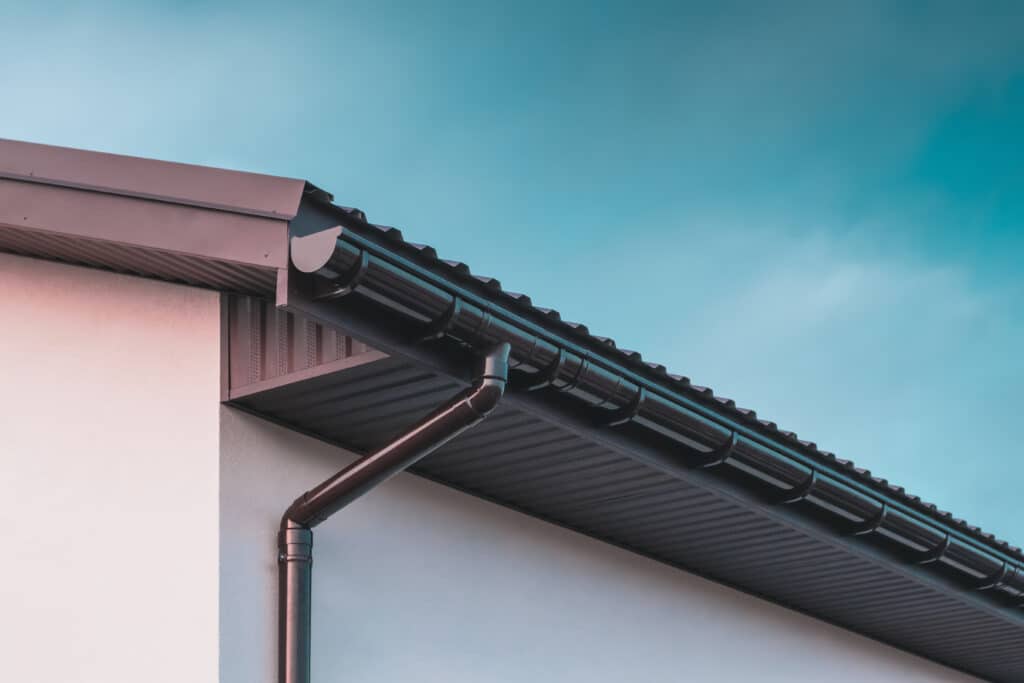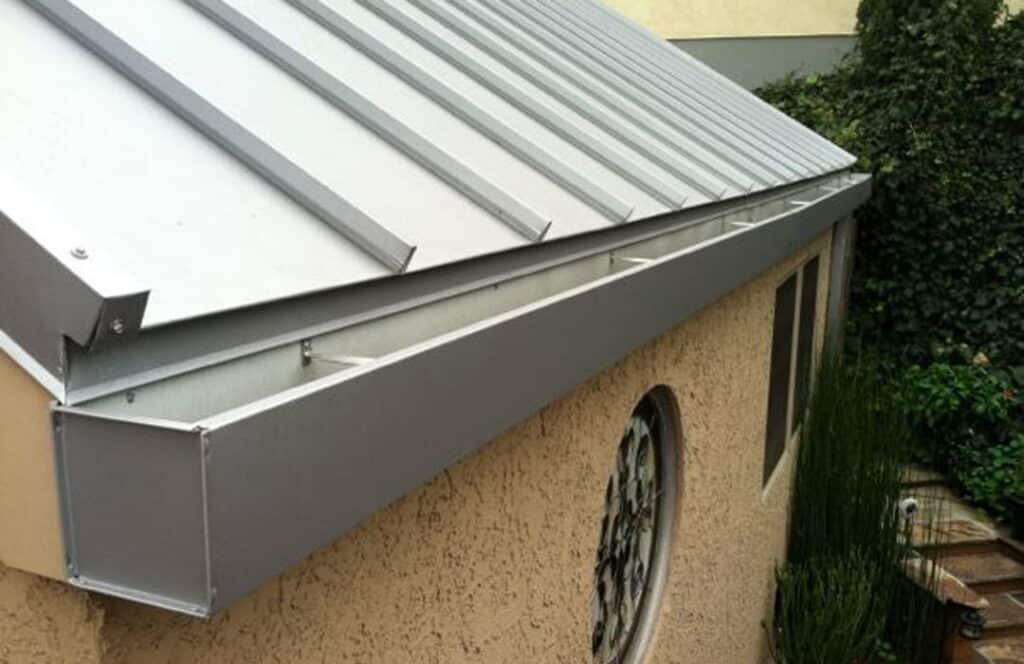The “Style” of a gutter refers to the overall shape and footprint of the gutter. There are several types of gutter profiles currently on the market and A To Z Gutters is happy to walk you through the pros and cons of each. We encourage you to take time to read through this blog to find the best gutter profile so you can customize your home to perfection!
Although famous for its shape, the bends and curves on the gutter may lead to unwanted issues. Debris is more likely to become stuck in the sharp edges, resulting in a blockage that can lead to sagging and eventually the brackets breaking because of the extra weight.
The two most common sizes of a K-style gutter are 5” and 6.” The 5” is the standard residential size whereas the 6” is for bigger or steeper roofs that need to collect a higher volume of water.
The half-round gutter is basically the bottom section of a circular pipe cut in half where water is collected through the top. Due to their round shape and absence of any sharp corners, they are the most efficient gutter for moving water. Their shape reduces clogging by promoting the ease of water flow, as opposed to a flat gutter where the debris would stay at the bottom. This ease of water flow can help prevent early corrosion and rusting of the gutter. A half-round gutter works the most efficiently with a round downspout, which, as it sounds, is a completely round pipe. The shape of both elements allows the gutter system to control larger volumes of water. In addition, round downspouts can be more decorative and modern when compared to a corrugated downspout.
This type of gutter is more popular in historic, traditional homes offering an elegant look that complements the rustic style. However, it is much more difficult and expensive to install when compared to a K-style gutter. To install a half-round gutter, brackets must be installed along the roof edge first before the gutter can be dropped in place and secured. Depending on the material used for the gutter, further reinforcement may be required, such as when comparing copper gutters to aluminum gutters.
Just like the K-style gutters, half-round gutters are offered in 5”- 8” sizes.
The box gutter profile is most often used for commercial and industrial buildings. They are designed to hold large volumes of water since they collect the water from extremely large roof areas. The larger the roof area, the higher the water output. Box downspouts are often used on box gutters to maintain the uniform look. They are rectangular downspouts, but unlike corrugated downspouts, they feature no ridges. Therefore, smooth downspouts add to the sleek, contemporary feel of a home while still being able to collect significant volumes of water.
Box gutters offer a sleeker and more concealed look, by blending into the building roof edge instead of protruding like a traditional gutter. Box gutters are often designed with a flange on the back side that is meant to be installed under the roof. Whether it is a shingle or metal roof, this ensures no water can get into the building or seep up under the roof. The downside to box gutters is that they need to be custom-made for the building requirements, so this often requires a high upfront cost as well as regular maintenance.
Box gutters come in sizes ranging from 5” to 10”! Standard sizes include 7’ and 8’ but can go up to 10,” for larger roofs. The 5” size is the most common for residential gutters, for homeowners who are looking for a sleek and modern look.
We hope that this comprehensive guide has helped you understand the different gutter profiles offered. As always, make sure to consider personal preference, weather conditions, and roof type in your selection.



